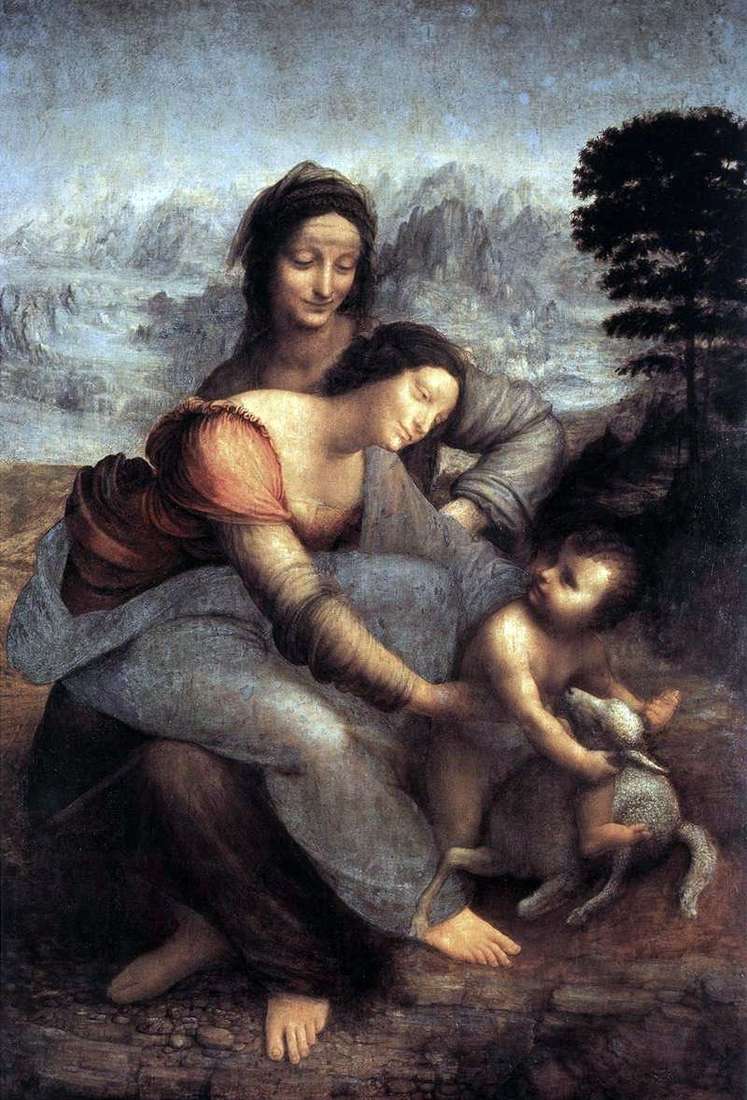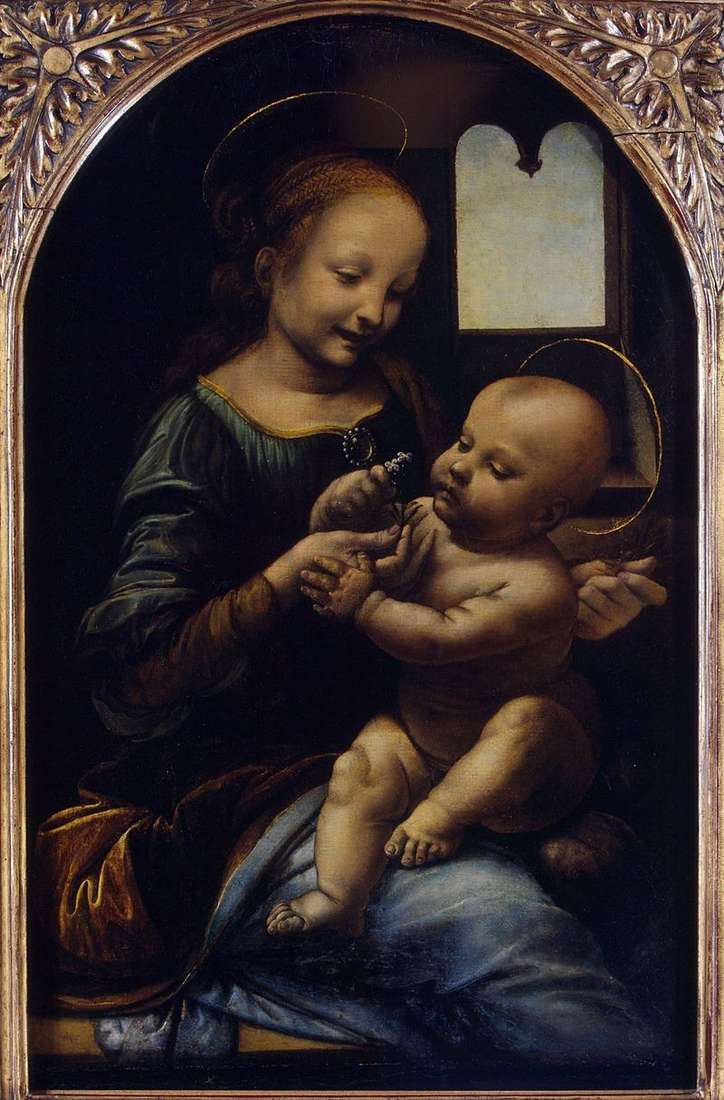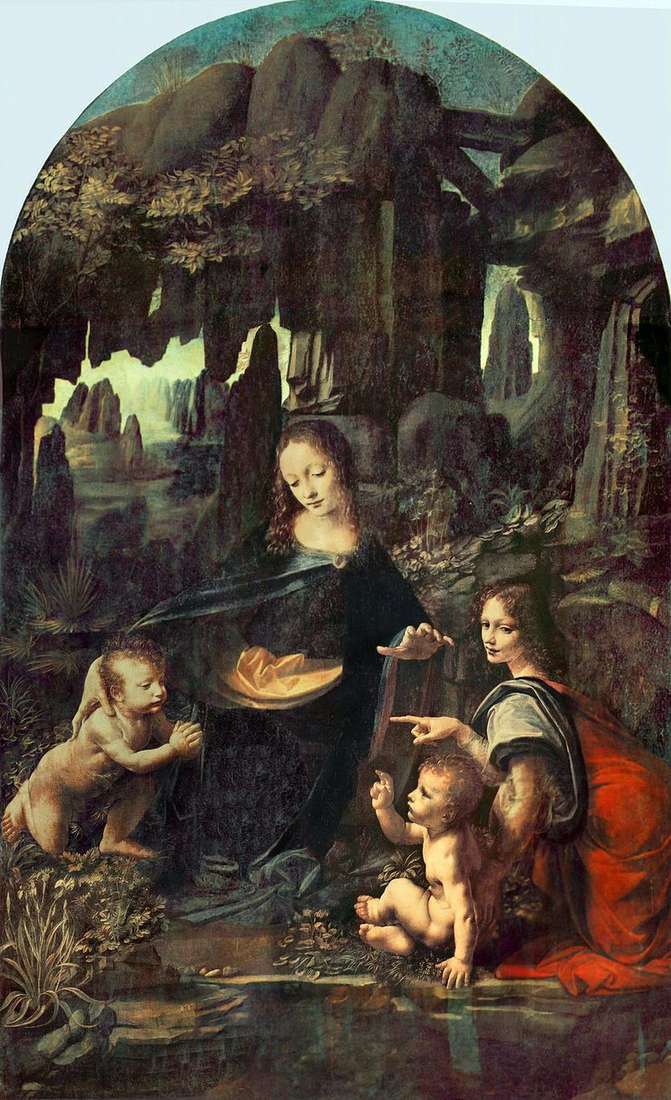
Before us, the canvas of Leonardo da Vinci on the popular plot of the Holy Virgin with the Child Christ and her mother, Anna. The arrangement of the figures in the family group differs from the earlier static compositions. All the early years of the XVI century. Leonardo da Vinci worked on the variants of this story: a picture with a slightly different interpretation of the group, John the Baptist in infancy, as well as the now lost cardboard, which caused a sensation when he was exhibited in the monastery of the Annunciation in Florence in 1501.
Although St. Anna is depicted on the usual place for her, behind the Holy Virgin, all three figures are very lively and realistic. Moving away from the tradition of depicting Anna as an elderly matron, Leonardo da Vinci wrote her unexpectedly young and attractive. She barely holds back her jubilation at the sight of the Baby. The ill-fated lamb in the embrace of the Child serves as an allusion to its future role of the lamb of God’s innocent sacrifice for the atonement of sins; nevertheless the symbolic meaning of this lively family trio against the background of a hazy landscape is negligible. SW. ANNA. The cult of Anna, Mother of the Virgin Mary, came to the West with Christian refugees persecuted by Muslim conquerors. Her earliest image appeared in the church of Santa Maria Antiqua, in Rome, where she is depicted with the Holy Virgin.
Around the XIV century. St. Anna was already a popular figure partly because her motherhood later confirmed the doctrine of the Immaculate Conception of the Holy Virgin. Usually she is portrayed with her daughter. Legend has it that she was married three times and had three daughters. In the Middle Ages, it was depicted along with a large family, the so-called Holy Family, various artists, for example, the Master of St. Veronica. In 1479 the monks of the Carmelite Order in Frankfurt formed the brotherhood of St. Anna and ordered the altar dedicated to her, on which the sienes from her life were depicted.
 The Virgin Mary with a child and St. Anna by Leonardo da Vinci
The Virgin Mary with a child and St. Anna by Leonardo da Vinci Saint Anna and Mary with the Infant Christ by Leonardo Da Vinci
Saint Anna and Mary with the Infant Christ by Leonardo Da Vinci Madonna and Child, Anna and John by Leonardo da Vinci
Madonna and Child, Anna and John by Leonardo da Vinci Madonna with a carnation by Leonardo Da Vinci
Madonna with a carnation by Leonardo Da Vinci Madonna with a flower (Madonna Benoit) by Leonardo da Vinci
Madonna with a flower (Madonna Benoit) by Leonardo da Vinci Madonna in the rocks (Madonna in the grotto) by Leonardo da Vinci
Madonna in the rocks (Madonna in the grotto) by Leonardo da Vinci Madonna with spinning wheel by Leonardo Da Vinci
Madonna with spinning wheel by Leonardo Da Vinci Saint Jerome by Leonardo Da Vinci
Saint Jerome by Leonardo Da Vinci